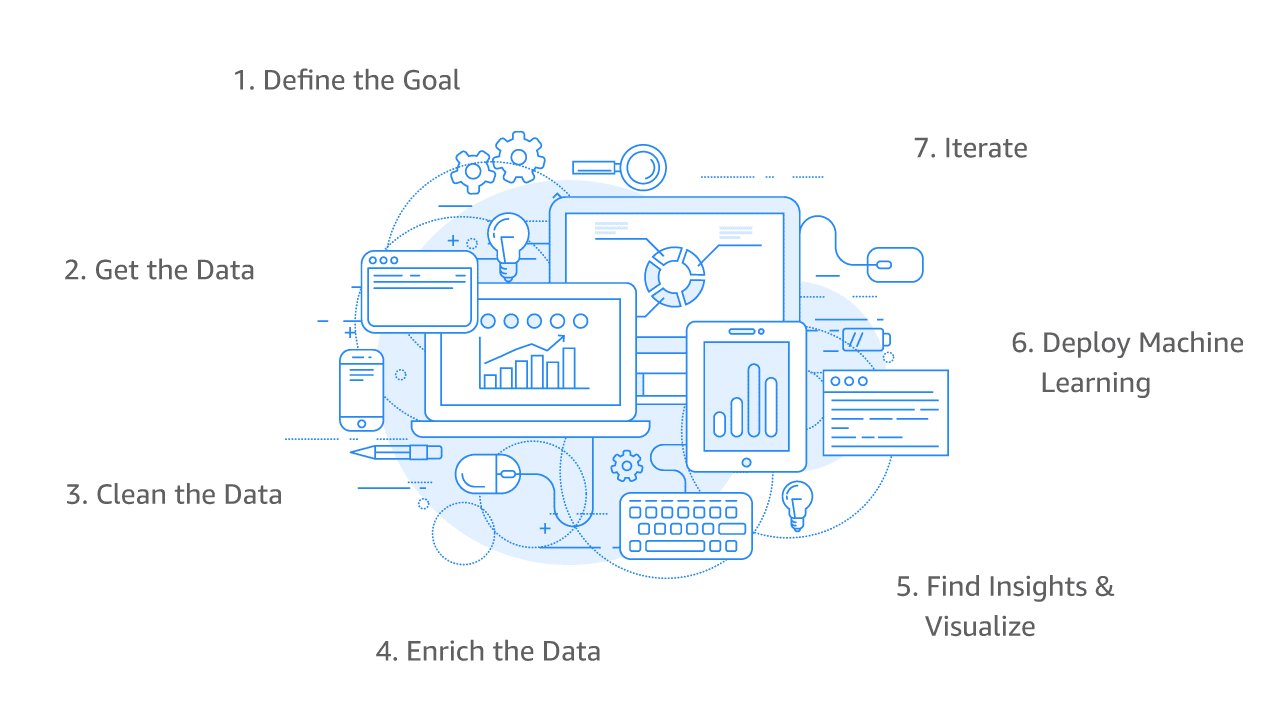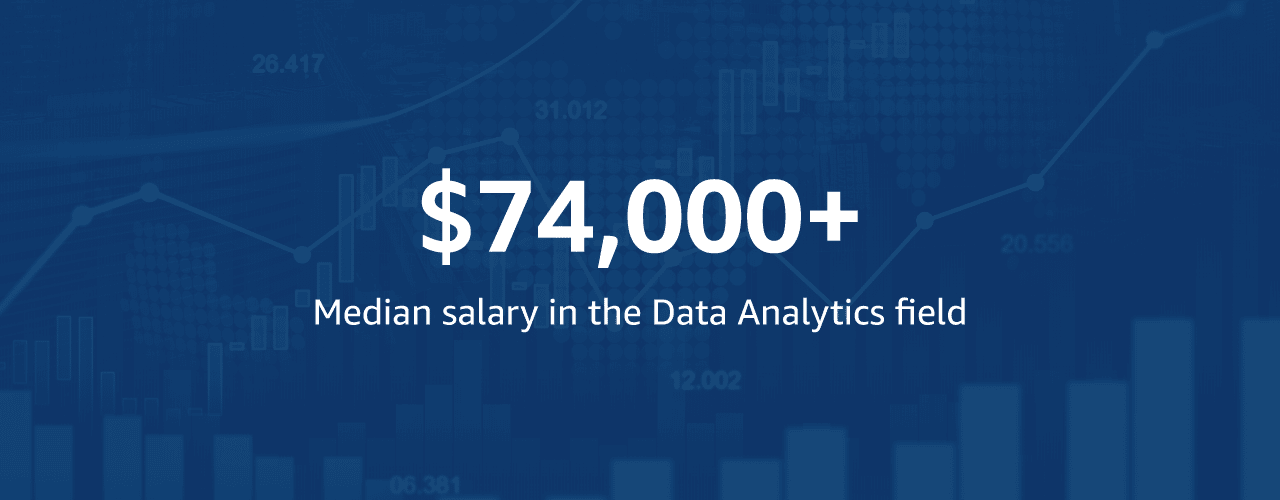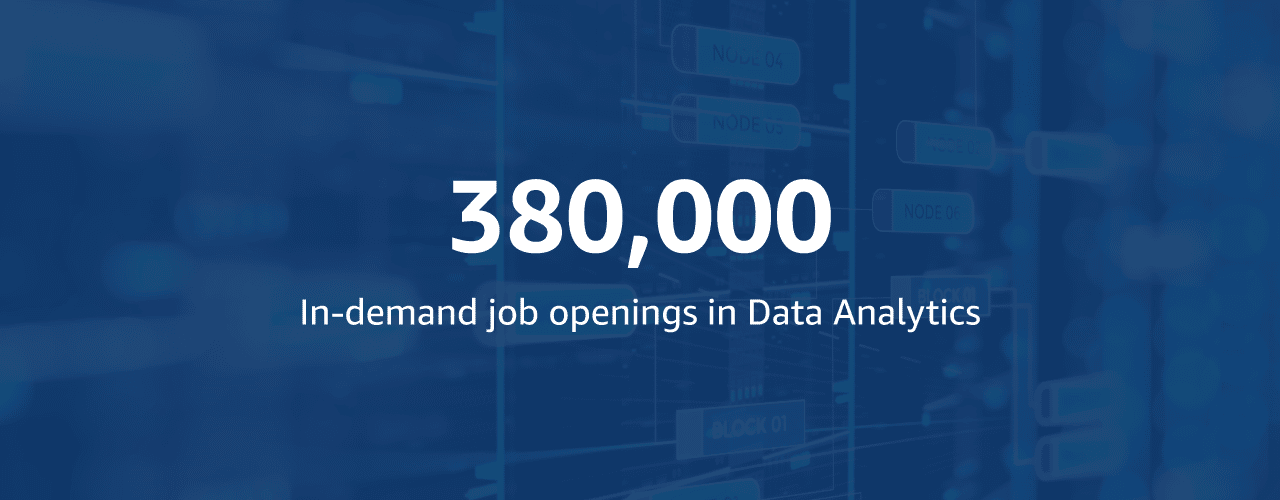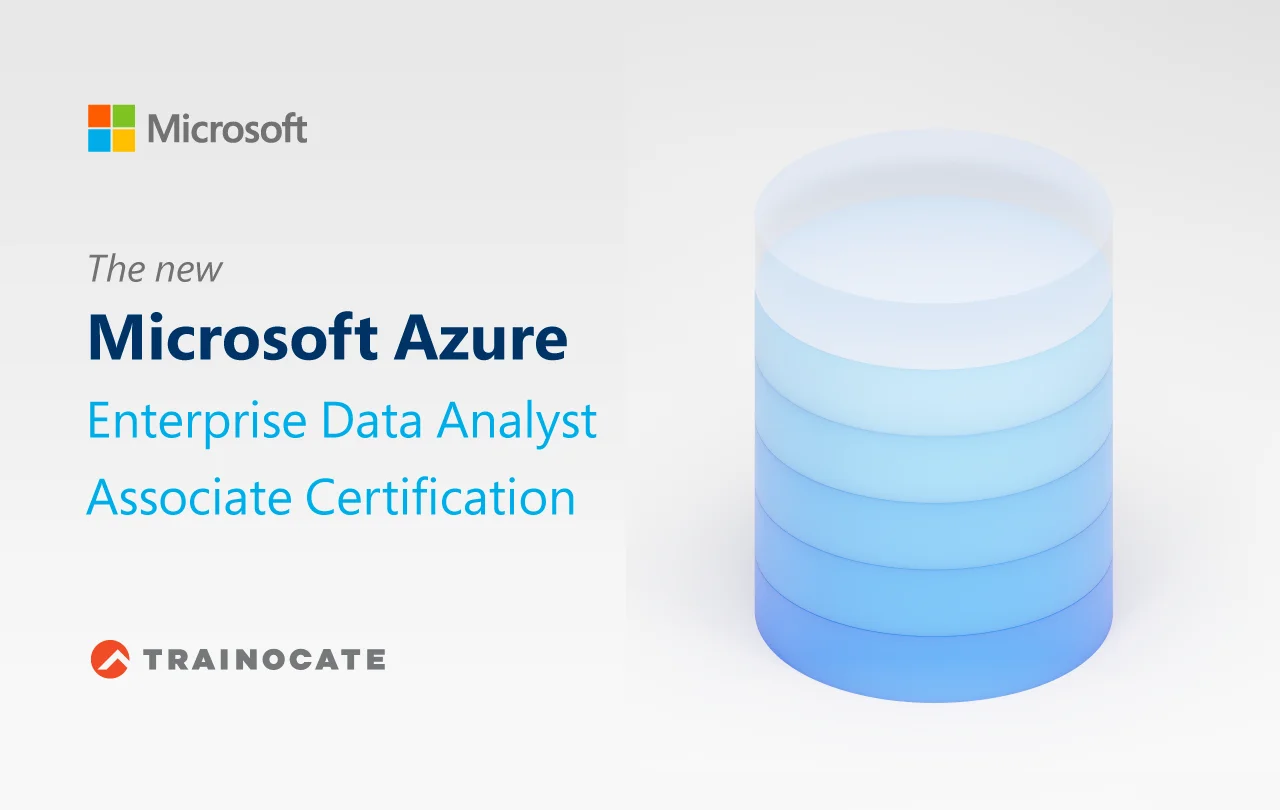Want to become a Data Analyst? Here’s how.
Want to become a Data Analyst? Here’s how.
Data Analytics is the now and the future.
A discipline based on the extraction from data, its analysis, the collection, organization and storage of data as well as tools and techniques that help to do so. It’s a well known fact that data collection is increasingly embedded in the most of the decision making of large companies. It shapes many businesses processes, whilst smoothening out the decision making and business results.
With the rising demand of data and the increasingly important role it plays in our day-to-day lives, the industry has also grown exponentially, with data analysts becoming the most wanted job role in most companies.
Regardless, venturing into new domains can be intimidating, and hard especially in the unprecedented times we live in. Thankfully the big data market is only deemed to grow even more. As a matter of fact, it is projected that its market will be worth $229.4 billion by 2025. Simply put, the data analytics market is rapidly increasing, and so is the demand for new data analysts.
To make yourself stand out and discover great opportunities, you will need some strategies. This article will elaborate on the steps on how to become a data analyst.
What a Data Analyst Does?
A data analyst is an individual in charge of gathering, processing and conducting statistical analyses on a large dataset. They are responsible to discover the different ways that these data can be utilized to solve problems or produce workable solutions. With the advancement of computers, data analysis gas also progressed in tandem with newer technological innovations. “The evolution of the relational database also gave data analysis a new dimension as it now allows analysts to use SQL to collect data from databases.”
What basic skills you should have as a Data Analyst?
You will probably need to possess skills in mathematics, statistics, communications as well as work with tools that are designed to carry out data analytics and visualizations.
Ready to explore this high-demand career. Them keep reading!
A Step-by-Step Guide to Becoming a Data Analyst
Get familiarized with the bare bones of data analytics
Take a deep dive of the world of data analytics using some of the top tools and contexts. The base component of this step lies in understanding the theory behind data analytics. Grasp as much theory as you can about it. Learn how it is being applied in real-life situations, and be familiar with the types of analyses that an analyst may conduct.
Let’s get down to the serious part.
The most effective and to some extent rewarding way to go down the data analytics career is to enroll in a bachelor’s degree or specialized programmes. Now, your next question may be “How long does it take to become a data analyst?” A college degree usually takes around three to four years.” Which might be too long for most professionals.
With the plethora of training programmes, and training scholarships offered, your dream of becoming a data analysts might not actually be that far fetched.
In fact, many data professionals, have pivoted career paths only post graduation.
Keep up to date with the latest data analytics tools.
Know the latest tools related to data analysis, which include:
- Spreadsheets and querying languages relied on by data analysts, like SQL and XML
- Programming frameworks and languages, such as Python, Hadoop, and R
- Visualization tools, such as Power BI, Tableau; Bokeh, Plotly, and Matplotlib
You should also have experience in one or more top data analysis solutions, such as Adobe Analytics and Google AdWords & Analytics.
In addition, you may want to put together practice works that deal with the various stages of data analysis: researching businesses and opportunities, setting the standards of the data you must gather, collecting and cleaning such data, then shaping and studying it using tailor-built algorithms. Lastly, transform these insights into stunning visualizations.
Try touching on a number of practice projects to master and show your skills in working with several data types, mining structured data, texts, images, audio, or video to conduct statistical analysis, identity causality, and perform predictions.
Polish up on your soft skills.
As with any job that you might hold, soft skills play a pivotal role. Here are some soft skills that might come in handy at your next data analytics role.
-
Good at research
-
Good at numbers
-
An analytical mindset
-
Excellent communication, collaboration, and presentation skills
-
A problem-solver
-
Great attention to details
-
Excellent organization skills and can meet deadlines
-
Business acumen
-
Knowledge of logical and methodical approaches
Feel like you might already possess some of these skills, then go on and note that your skill gaps and fill those up. If your current workplace offers a kind of development in these areas, grab it. You can also look for opportunities elsewhere. For instance, carry out informal meetups.
List as many essential skills on your CV as possible when sending in your job application. Albeit, often overlooked some times your soft skills can be the deciding factor on getting hired.
Make visualizations and practice demonstrating them.
Practice making your own visualizations and look for the perfect way to allow the data to speak for itself. Microsoft Excel comes into the picture even at this early stage, and it remains to be useful after more than three decades and is inevitable in the data science field.
Data analysts should also be able to use visualizations to explain outcomes. If such communication skills do not come innately to you, start practicing now. If needed, start small by presenting to a friend, then colleagues, and so on.
It’s time to build your network, to increase your net worth.
We hear this a lot and yes, they can be awkward, but we can’t emphasize enough how important it is to have a strong network – regardless of how you do it, online or in person. It also doesn’t always have to be awkward. Those LinkedIn message templates might just do the trick.
Connect with like-minded individuals ahead of time. A good network paves the way for potential opportunities and career prospects. It is also a wonderful source of support and mentorship. Furthermore, surrounding yourself with individuals you can share experiences with and learn from is important. A good connection may even lead you to a job opportunity.
So go forth and join a data analytics groups or connect with other, like-minded analysts on LinkedIn, too.
Prepare your portfolio and yourself for the job market.
Your portfolio is the most important asset that you have with regard to job applications as it exhibits your expertise and skills to employers. It can also show that you really know how to apply them in real life.
The creation of a polished portfolio is rooted in taking the right data analytics program. Another factor is being coached by a competent mentor.
Establish your online presence.
You’ll be surprised how effective an up to date LinkedIn profile or an optimized online presence can be. Make sure you have all your updated skills, certification credentials on your profile. Flex it, don’t shy away from your accomplishments.
Apply to data analyst jobs.
There is a vast selection of data analyst jobs you can apply for. Some of these include researcher, database administrator, data and analytics manager, digital marketing manager, statistician, transportation logistics, business analyst, systems analyst, and health care analyst, among others. McKinsey & Co. says that demand for these roles may outpace the estimated data professionals supply by 50% or 60%, meaning that it will be harder to fill these jobs. Nevertheless, the data analyst salary starts at $65,236, according to Indeed.
Once you begin applying for jobs, get ready to be interviewed. Every company has its own interviewing methodologies, but you should know how to answer some commonly asked questions.
Get yourself certified.
As we have mentioned in prior paragraphs, although getting a degree in data analytics might be the most optimum way of getting in the field, this might not be the friendliest options for those who might be strapped for cash and/or time.
So, what’s a surefire way to still land a career but skip the 4 year wait for a degree? Certifications! Professional data analytics certifications by tech giants like Google, AWS, Microsoft, are widely recognized by companies across industries.
And we can help you do just that.
Discover our wide ranging data analytics courses. You can choose from various different principles to suit your needs and your lifestyle.
Click on the banner below and you are half way there to your dream data analyst job.









